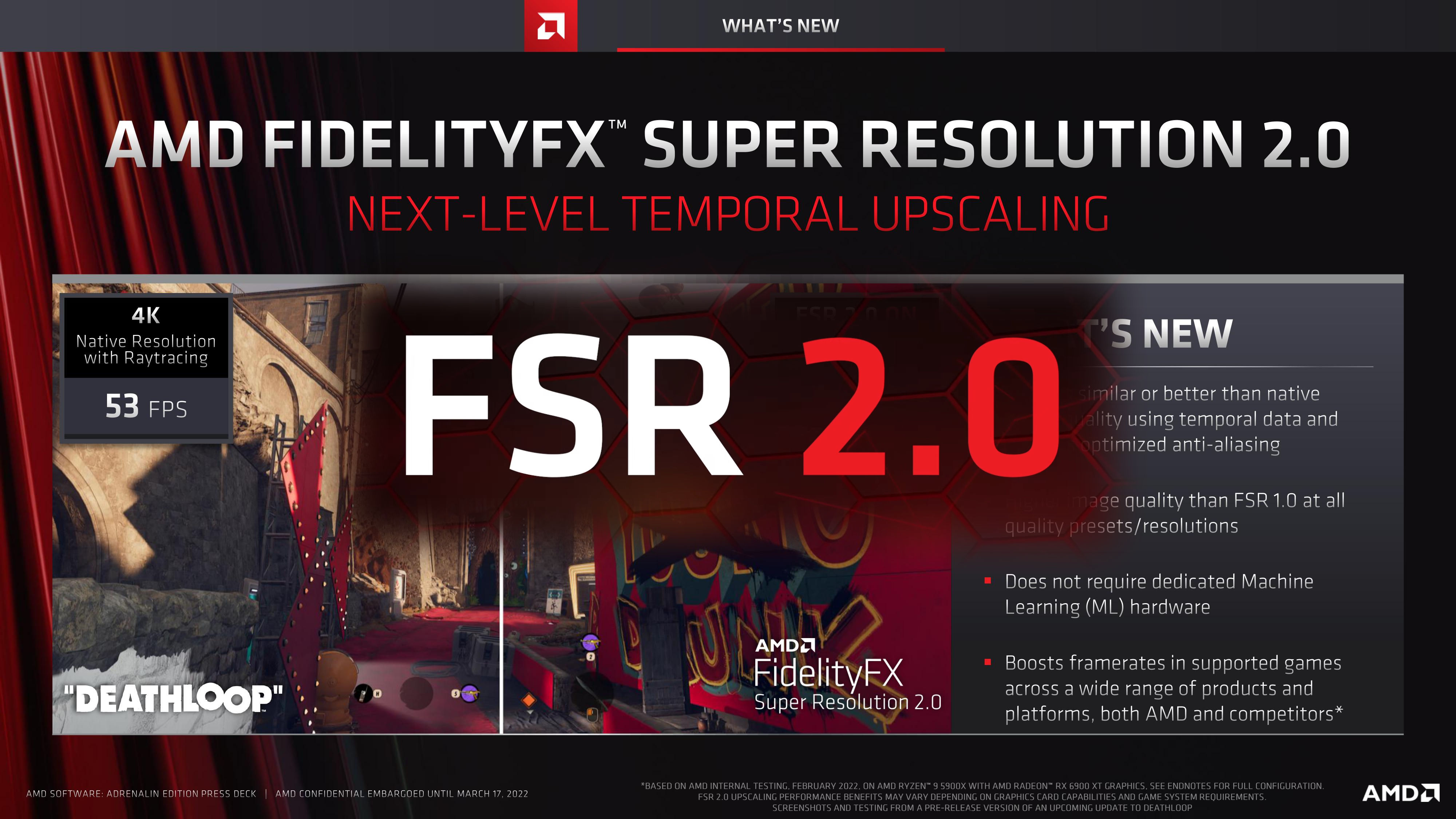AMD has achieved the unthinkable—the new FidelityFX Super Resolution FSR 2.0 looks amazing, just as good as DLSS 2.0, actually DLSS 2.3 (in Deathloop). Sometimes even slightly better, sometimes slightly worse, but overall this is a huge win for AMD. Take a look at our comparison images—there's a huge improvement when comparing FSR 1.0 to FSR 2.0. The comparison to "Native" or "Native+TAA" also always looks worse than FSR 2.0, which is somewhat expected. When comparing "DLSS Quality" against "FSR 2.0 Quality" it is possible to spot minor differences, but for every case that I found I'd say it's impossible to declare one output better than the other, it's pretty much just personal preference, or not even that.
Things look a bit different at the lower end of the spectrum, comparing "DLSS Performance" to "FSR 2.0 Performance". Here I would say that DLSS is slightly better, especially when it comes to textured surfaces. Thin geometry also looks a little bit more detailed with DLSS, but it's a very close outcome overall, especially considering that NVIDIA has had a lot of time to fine-tune DLSS, whereas FSR 2.0 is on its first iteration. If you actively hunt for rendering issues you can find them in both upscaling implementations, but I'm happy to report that ghosting, while slightly visible, isn't a serious issue issue in FSR 2.0. The only noteworthy case is when fine line geometry, like a fence, is sitting behind other fine geometry like vegetation. DLSS handles ghosting a little bit better overall, even though the visual artifacts in DLSS look a bit more distracting than in FSR 2.0.
We also have comparisons with NVIDIA's DLAA (deep-learning anti-aliasing), which renders at native resolution, and uses DLSS only for anti-aliasing. This is basically native quality + enhancements. FSR doesn't have any counterpart at this time, but I'm sure if demand is high enough, they'll add this capability. From a technical perspective, it's not that challenging to add on top of FSR 2.0. Not sure if the performance hit of native resolution rendering is worth the tiny improvement in image quality...maybe for those single-player games that run 200+ FPS anyway, where you want the absolute best in image quality.
With FSR 1.0, AMD pioneered the addition of a sharpening filter to the upscaling pipeline. While this has been possible with NVIDIA sharpening through their Control Panel, too, it wasn't as nicely integrated. NVIDIA has since added a sharpening pass to DLSS 2.0, too, but that option is not available in Deathloop. While sharpening on FSR 1.0 was tied into the "Ultra Quality" preset exclusively, with FSR 2.0 it has been decoupled and is now a separate option, with fine-grained control over the amount of sharpening applied. I hope that there's a strong recommendation for all developers to expose these settings to the end-user, because a selectable range plus "off" is a must for any sharpening filter due to personal preferences. That's also why I separated the "FSR 2.0 Quality" and "FSR 2.0 Quality + Sharpening" comparison images—lots of people find sharpened images very distracting and rather prefer the slightly smoother look.
Another novelty is that FSR 2.0 supports dynamic resolution scaling, which works very well. You have plenty of options to play with, including setting a FPS target and a quality minimum, and the algorithms take care of the rest. The way the game switches between resolutions is so smooth I couldn't even spot it—I tried.
In terms of performance FSR 2.0 deserves praise, too. While it is a little bit more demanding than FSR 1.0, not surprising given the additional logic, it's still mighty fast and is pretty much identical to DLSS 2.0, even on NVIDIA hardware, which is able to offload many DLSS upscaling operations to the Tensor Cores. No doubt, on AMD hardware there will be additional optimizations, but we wouldn't be able to compare performance against DLSS then, because it's an NVIDIA exclusive technology. On the other hand, you're able to use FSR even on older NVIDIA hardware that don't support DLSS (Pascal or even Turing 16-series). I really have to applaud AMD for democratizing upscaling without additional hardware requirements, and all we need now is widespread game developer support.







